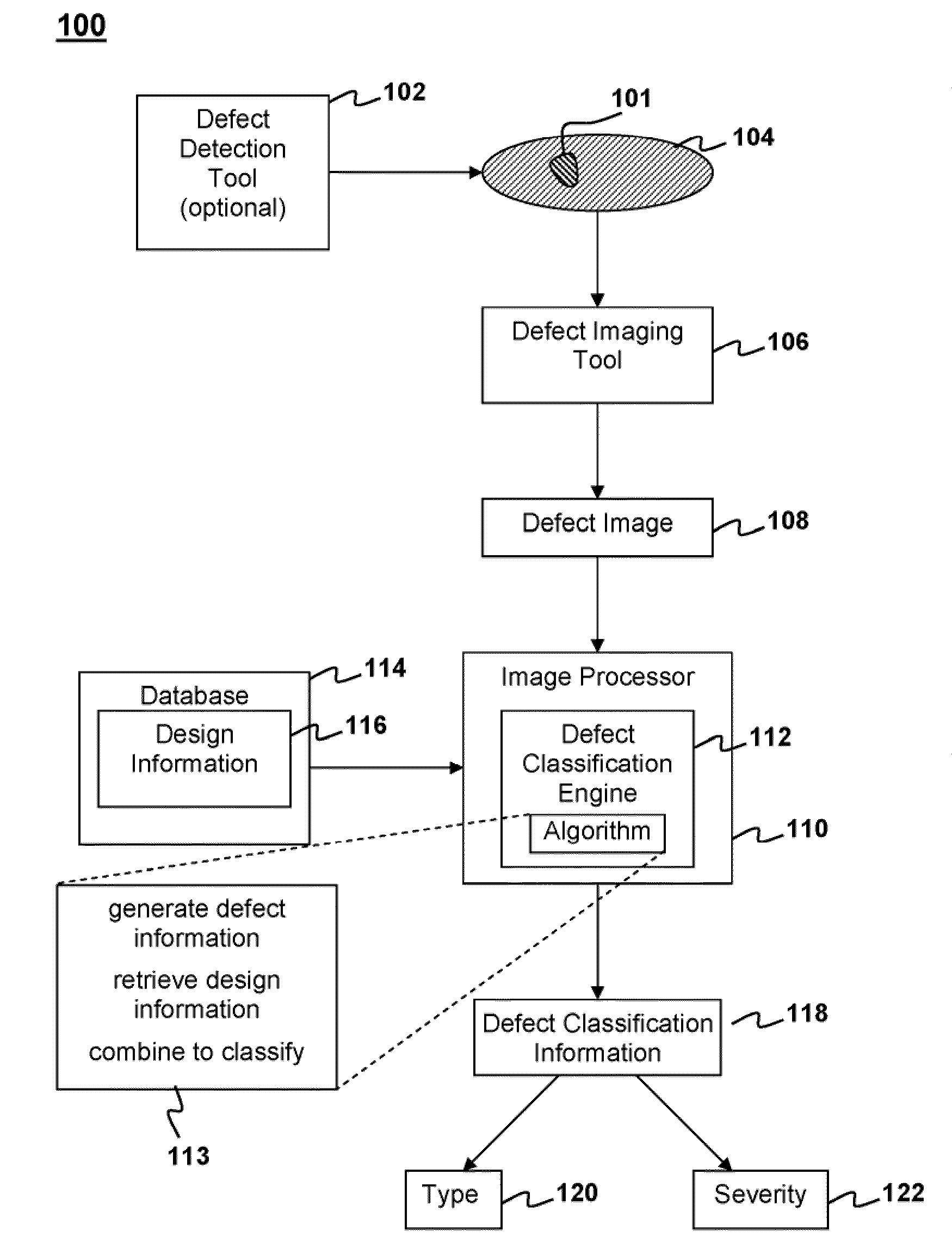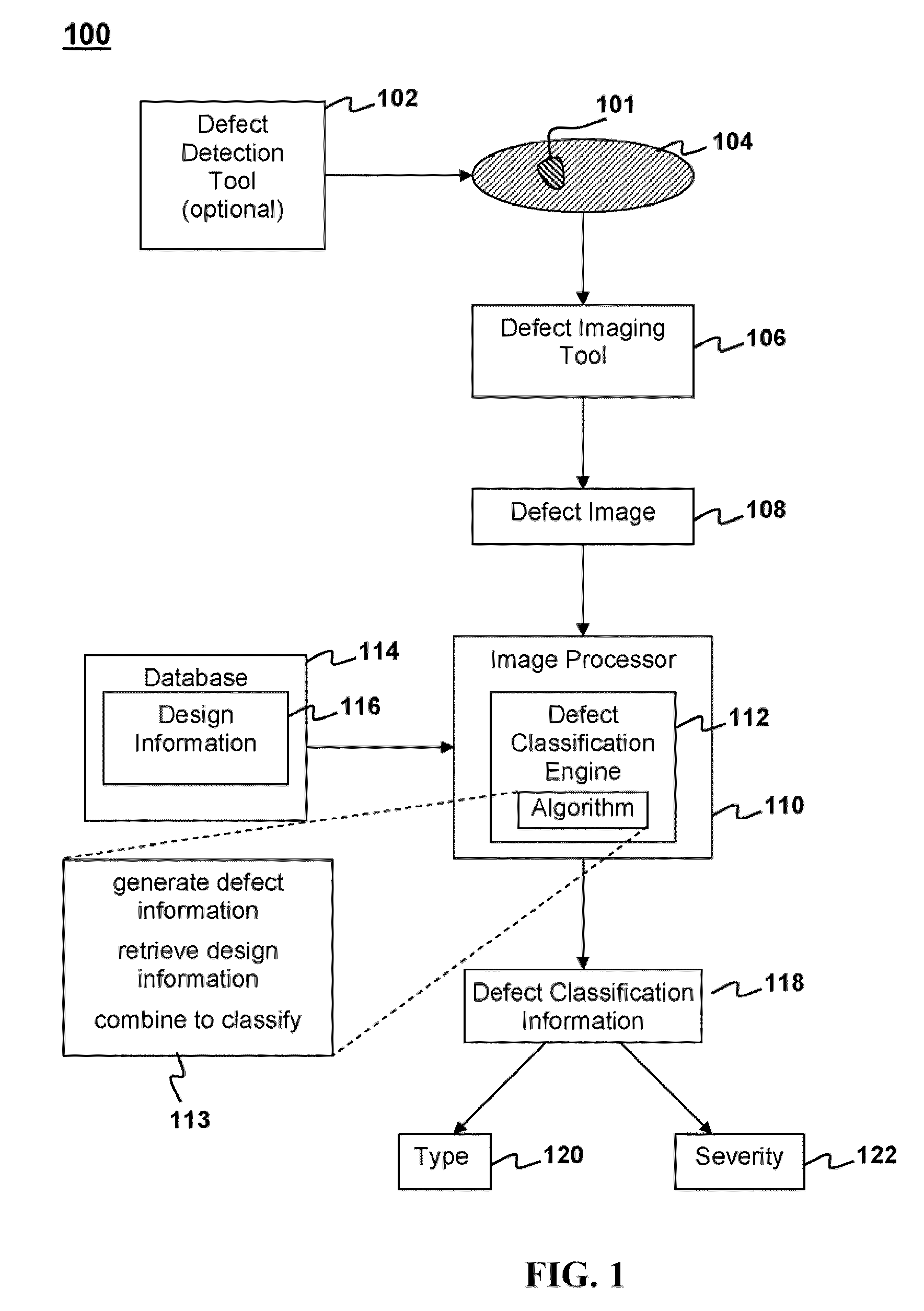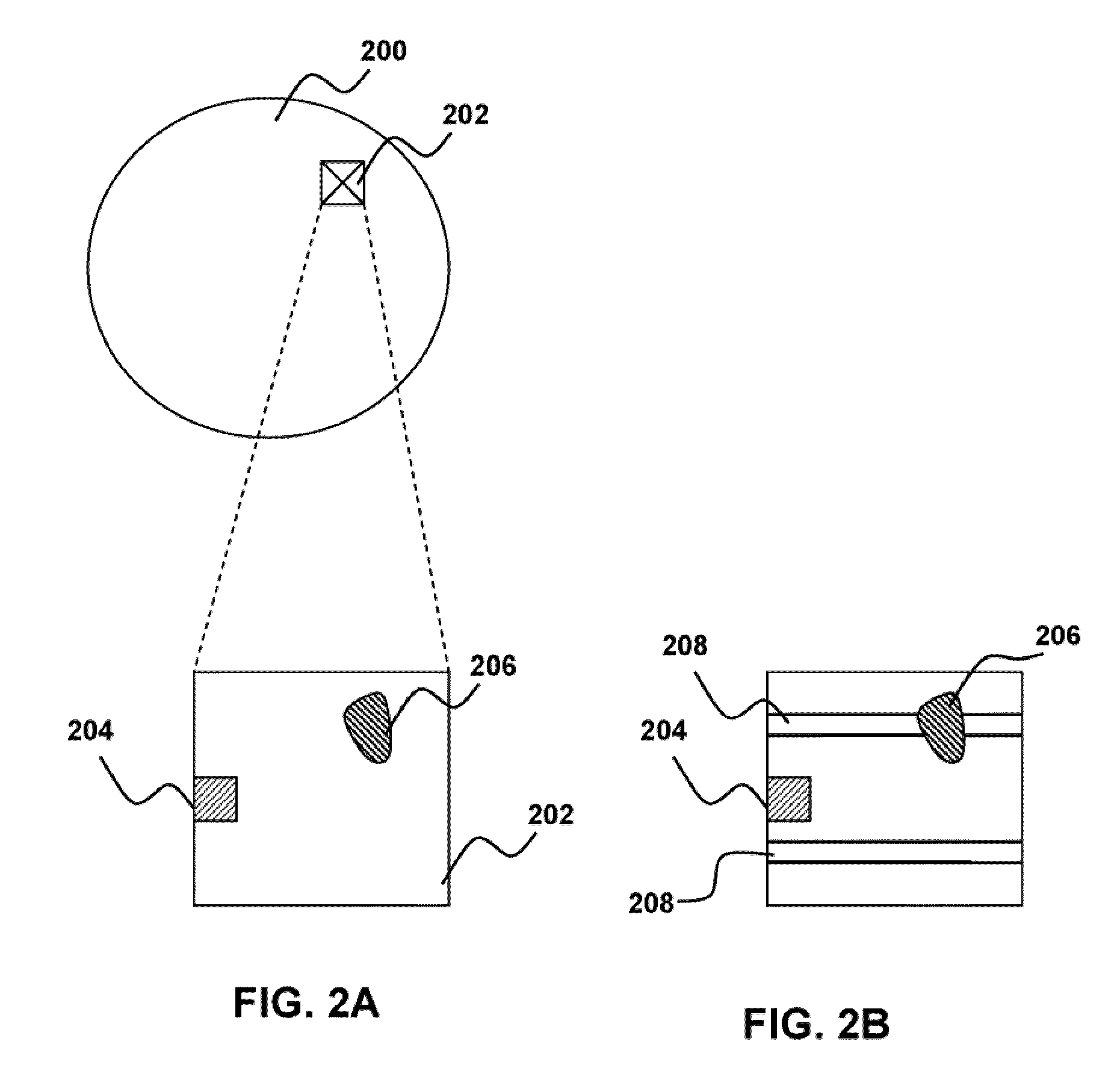Use of design information and defect image information in defect classification
- Summary
- Abstract
- Description
- Claims
- Application Information
AI Technical Summary
Benefits of technology
Problems solved by technology
Method used
Image
Examples
Embodiment Construction
[0012]Although the following detailed description contains many specific details for the purposes of illustration, anyone of ordinary skill in the art will appreciate that many variations and alterations to the following details are Within the scope of the invention. Accordingly, the exemplary embodiments of the invention described below are set forth without any loss of generality to, and without imposing limitations upon, the claimed invention.
[0013]FIG. 1 is a flow diagram illustrating a process 100 for defect classification based only on a single defect image and the design information or a semiconductor device according to an embodiment of the present invention. As shown in FIG. 1, a defect 101 on a wafer 104 is optionally detected using a defect detection tool 102.
[0014]A defect imaging tool 106 may then generate a defect image 108 of the defect 101. The defect imaging tool 106 may be SEM, CD-SEM, AFM, STM, optical microscope and the like. An example of a commercially availabl...
PUM
 Login to View More
Login to View More Abstract
Description
Claims
Application Information
 Login to View More
Login to View More - R&D
- Intellectual Property
- Life Sciences
- Materials
- Tech Scout
- Unparalleled Data Quality
- Higher Quality Content
- 60% Fewer Hallucinations
Browse by: Latest US Patents, China's latest patents, Technical Efficacy Thesaurus, Application Domain, Technology Topic, Popular Technical Reports.
© 2025 PatSnap. All rights reserved.Legal|Privacy policy|Modern Slavery Act Transparency Statement|Sitemap|About US| Contact US: help@patsnap.com



